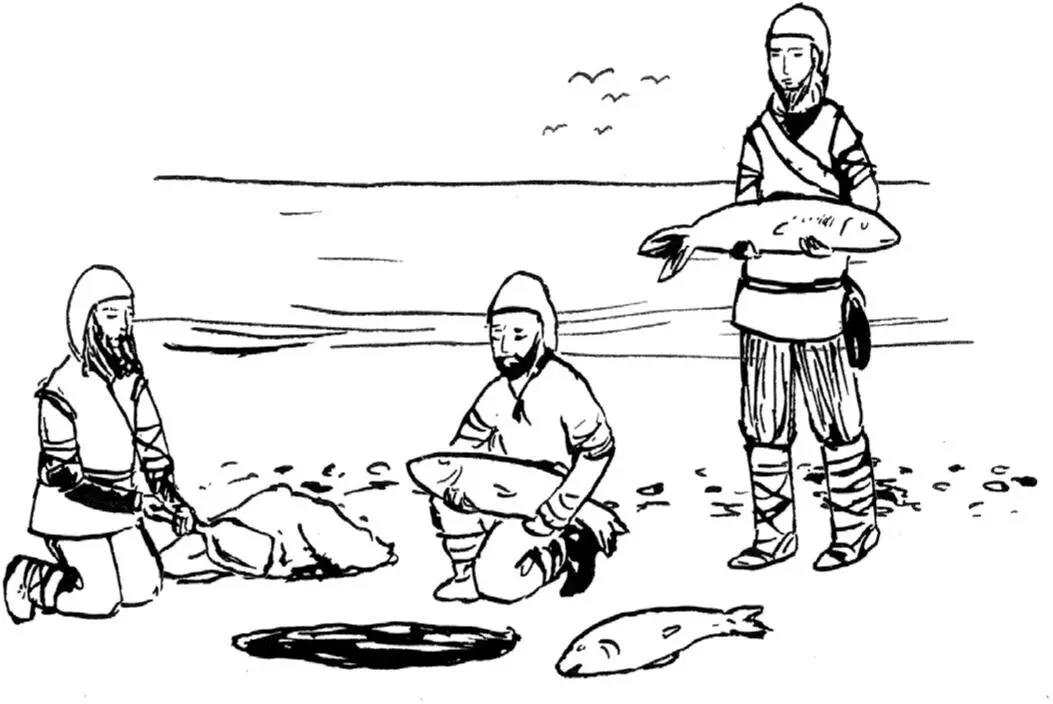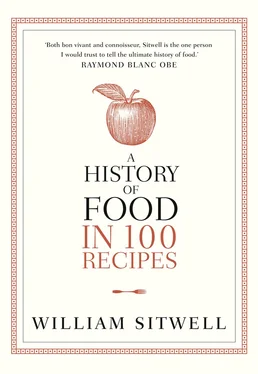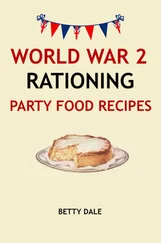Perhaps it was his childhood on the farm that had instilled in the young Cato a Spartan frugality. His father apparently died while Cato was quite young and he inherited considerable responsibilities, learning the business of farming in his early teens. As an older man, he ate with his servants, was a strict parent, a harsh husband, an inflexible official and, by all accounts, a downright bore.
He was also a prolific author, although only fragments tend to remain of his writings. He wrote a history of Italy in Latin, published a collection of his speeches – including the deadly retrospective On His Consulship (he’d been a consul before discovering his métier as censor) – and a tome entitled On Soldiery. Not even fragments of the latter remain but one can imagine the sort of thing it might have included: dawn rises, cold showers, spotless uniforms and suicidal charging at the enemy.
But one volume that has survived completely intact is his De agri cultura, or ‘On Farming’. A manual on good agricultural practice, it advises, for example, how many slaves to hire for the olive harvest and how – in one particularly charming note – a slave’s ration might be reduced should he be so audacious as to fall ill. It also gives details on how to preserve food, including the earliest recorded description of how to salt pork – the recipe that heads this chapter. In addition Cato offers recipes for pickling and smoking, and his writings show that he had considerable expertise, employing methods that would be just as workable today.
Knowing how to preserve meat, fish or indeed fruit was vital in the centuries preceding the advent of the supermarket and the fridge. Indeed Polish professor Maria Dembinska, writing in the late twentieth century, has described it as ‘the greatest worry of primitive man’. In the days when finding food for everyday consumption was a trial, if not life-endangering, its preservation was all the more important. That ever-present fear of hunger challenged man’s ingenuity to find methods to both preserve food and then store it effectively.
How much less meat we might waste today if we had to hunt it ourselves – if we had speared it while it was charging at us. Preserving food was necessary not just so that it would last beyond the weekend but because food might be sourced at quite a distance from where it would be consumed. So people buried food in situ. Excavations on the Irish and Norwegian coasts have uncovered bones, for example, from fish buried between 5000 and 2000 bc. That they were excavated shows a skill in burying fish, if not in retrieving it. Without a map to mark the spot, that fish remained buried for rather longer than was perhaps intended.
Herodotus, meanwhile, wrote 2400 years ago of the Babylonians and Egyptians drying fish in the wind and the sun. And meat was often hung in the roofs of houses. Perhaps that is how it came to be smoked – by mistake over a home fire, but resulting in another method of preserving food as well as enhancing the flavour. The Vikings may have developed this concept, although no records exist to confirm this. Once it was discovered that salt was a proficient preserver, that idea quickly spread too. By 1800 BC there were salt mines all over the place. Although many still preferred to bury their fish, particularly in the lands of the north.
A Swedish census from 1348 records the existence of a man called Olafuer Gravlax. He lived in Jamtland in central Sweden and as his surname means ‘buried fish’ we can assume that that’s what he did. Whoever first produced gravlax – cured salmon – in Scandinavia probably did it by mistake, his aim simply being to store fish for the winter season when freezing temperatures and ice-covered rivers and lakes would have made fishing almost impossible. Burying it also would have kept it away from thieves – from ‘those on two, as well as those on four legs’, as the Norwegian author Astri Riddervold puts it.

So he buried his fish. Then when he dug it up months later, it would have stunk, horribly, having lain underground and then fermented. But, ignoring the smell, whoever dug it up then bravely tasted it and found it not just to be edible but to have a remarkable flavour, albeit very different from that of the fresh fish he had buried all those months before. It was a miracle. The following season, maybe he added salt to one fish, a little sugar to another and sugar and salt to another. Perhaps he then experimented to see what happened if he stored it for less time – a few months, weeks, then days.
Who knows quite how it happened and when it became an established practice. But people liked the tart taste and it became a culinary tradition, not to mention a commercial enterprise. Indeed, while Olafuer Gravlax buried fish he may not have run the entire business. This we can surmise from another record – this time in the 1509 annals of Stockholm – which lists one Martin Surlax, whose surname translates as ‘sour fish’. So as sour fish is the result of burying fish, perhaps Mr Gravlax buried it while Mr Surlax dug it up.
Gravlax brings echoes of the 1980s, when it was all the rage in Britain, served at dinner parties with dill sauce. These days you don’t of course need to bury it to make it as a trip to the supermarket makes its procurement rather easier. And with the addition of salt, sugar, dill and some spices (peppercorns and coriander seeds), you can even do your own burying – in the fridge for just two days. Back in the fourteenth century it wouldn’t have been quite so straightforward, but those early fish buriers were clearly on to something. They may have been using their instincts when they added salt and sugar, but they were unknowingly engaging in a very complicated scientific process. The salt drew out the water but also refreshed the proteins and preserved the fish.
Be they medieval fish buriers who cured salmon for a living or a Roman disciplinarian who salted pork in his spare time, these early innovators used their ingenuity to keep hunger at bay. Meanwhile, the techniques that once staved off real hunger in former times now sate the greed of the modern snacker today. For where would we be without all those salty, sugary goodies to make us obese and thirsty?
6
Roast goat
30 BC
AUTHOR: Virgil, FROM: Georgics II: 545
Therefore to Bacchus duly will we sing,
Meet honour with ancestral hymns, and cakes
And dishes bear him; and the doomed goat
Led by the horn shall at the altar stand,
Whose entrails rich on hazel-spits we’ll roast.
You may not consider Virgil to be a recipe writer, yet here is what amounts to a recipe for goat, roasted on an early version of a spit. And I’m not the only one who has cited this extract as a recipe. It was quoted back in the 1800s, to illustrate the simplicity of roasting as a cooking method. In a section entitled ‘The Ladies Department’ in an 1825 edition of the US publication the American Farmer, the poem is referred to with the comment that ‘Roasting is the most simple and direct application of heat in the preparation of food.’ While four years earlier, in 1821, Frederick Accum in his Culinary Chemistry also cites Virgil, going on to say: ‘Roasting on a spit appears to be the most ancient process of rendering animal food eatable by means of the action of heat.’
Before metal spits were devised, meat would be skewered onto branches pulled from trees – often hazel wood, as in Virgil’s poem. The sap in the wood, when heated, would make the branch turn (so long as the animal being cooked was light enough, such as a small bird like a lark; it wouldn’t happen if you skewered a pig on it) and people who witnessed it thought it supernatural. Hazel was also used as a divining rod.
Читать дальше













